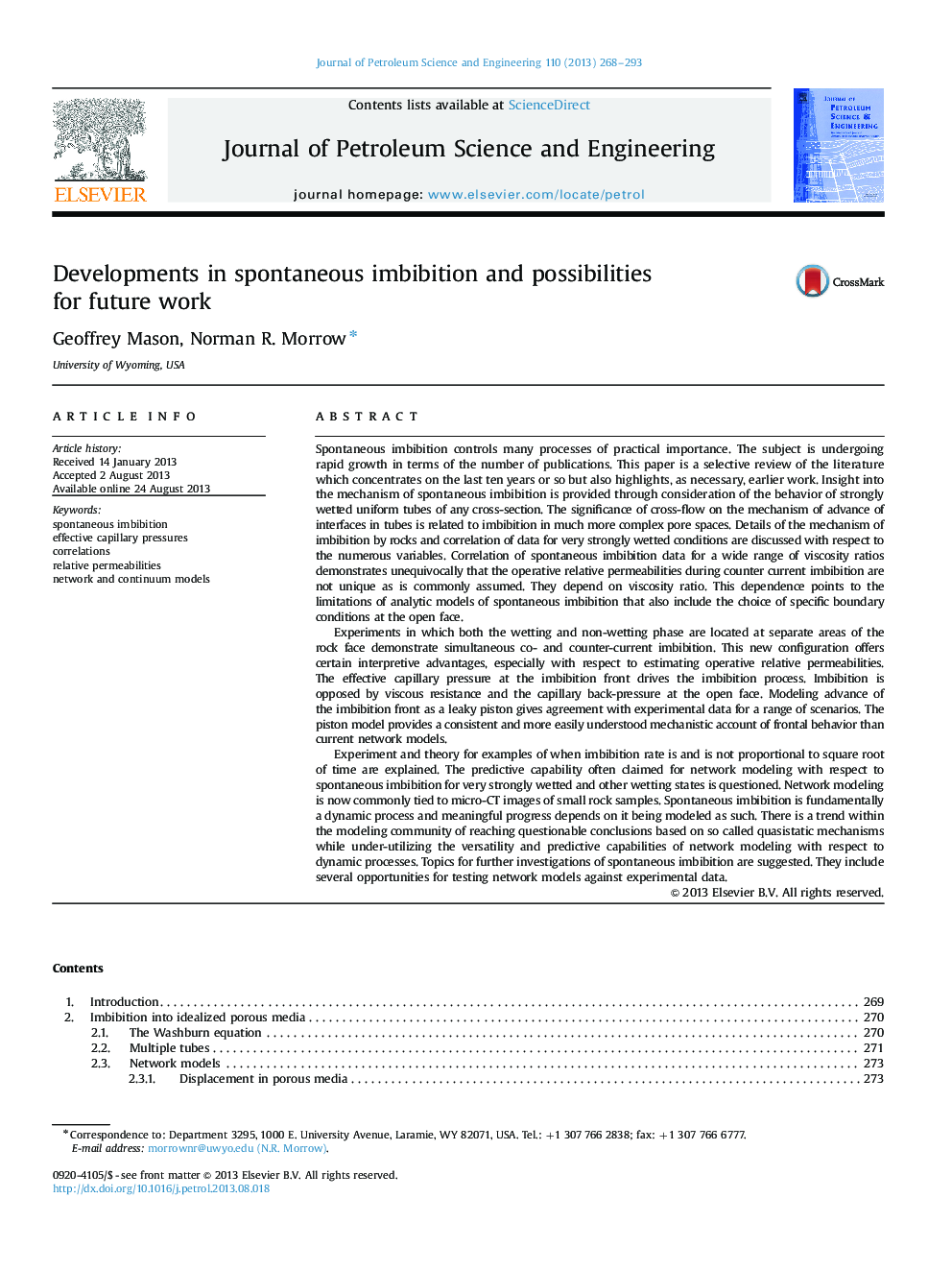| کد مقاله | کد نشریه | سال انتشار | مقاله انگلیسی | نسخه تمام متن |
|---|---|---|---|---|
| 1755213 | 1522831 | 2013 | 26 صفحه PDF | دانلود رایگان |

• Subject is growing rapidly but fragmenting.
• Correlations show that relative permeabilities depend on viscosity ratio.
• Assumed boundary conditions (inc. bubble pressure) at the open face are critical.
• Dynamic (not pseudo-quasi-static) network modeling is needed.
• A simple piston model matched experimental data.
Spontaneous imbibition controls many processes of practical importance. The subject is undergoing rapid growth in terms of the number of publications. This paper is a selective review of the literature which concentrates on the last ten years or so but also highlights, as necessary, earlier work. Insight into the mechanism of spontaneous imbibition is provided through consideration of the behavior of strongly wetted uniform tubes of any cross-section. The significance of cross-flow on the mechanism of advance of interfaces in tubes is related to imbibition in much more complex pore spaces. Details of the mechanism of imbibition by rocks and correlation of data for very strongly wetted conditions are discussed with respect to the numerous variables. Correlation of spontaneous imbibition data for a wide range of viscosity ratios demonstrates unequivocally that the operative relative permeabilities during counter current imbibition are not unique as is commonly assumed. They depend on viscosity ratio. This dependence points to the limitations of analytic models of spontaneous imbibition that also include the choice of specific boundary conditions at the open face.Experiments in which both the wetting and non-wetting phase are located at separate areas of the rock face demonstrate simultaneous co- and counter-current imbibition. This new configuration offers certain interpretive advantages, especially with respect to estimating operative relative permeabilities. The effective capillary pressure at the imbibition front drives the imbibition process. Imbibition is opposed by viscous resistance and the capillary back-pressure at the open face. Modeling advance of the imbibition front as a leaky piston gives agreement with experimental data for a range of scenarios. The piston model provides a consistent and more easily understood mechanistic account of frontal behavior than current network models.Experiment and theory for examples of when imbibition rate is and is not proportional to square root of time are explained. The predictive capability often claimed for network modeling with respect to spontaneous imbibition for very strongly wetted and other wetting states is questioned. Network modeling is now commonly tied to micro-CT images of small rock samples. Spontaneous imbibition is fundamentally a dynamic process and meaningful progress depends on it being modeled as such. There is a trend within the modeling community of reaching questionable conclusions based on so called quasistatic mechanisms while under-utilizing the versatility and predictive capabilities of network modeling with respect to dynamic processes. Topics for further investigations of spontaneous imbibition are suggested. They include several opportunities for testing network models against experimental data.
Journal: Journal of Petroleum Science and Engineering - Volume 110, October 2013, Pages 268–293